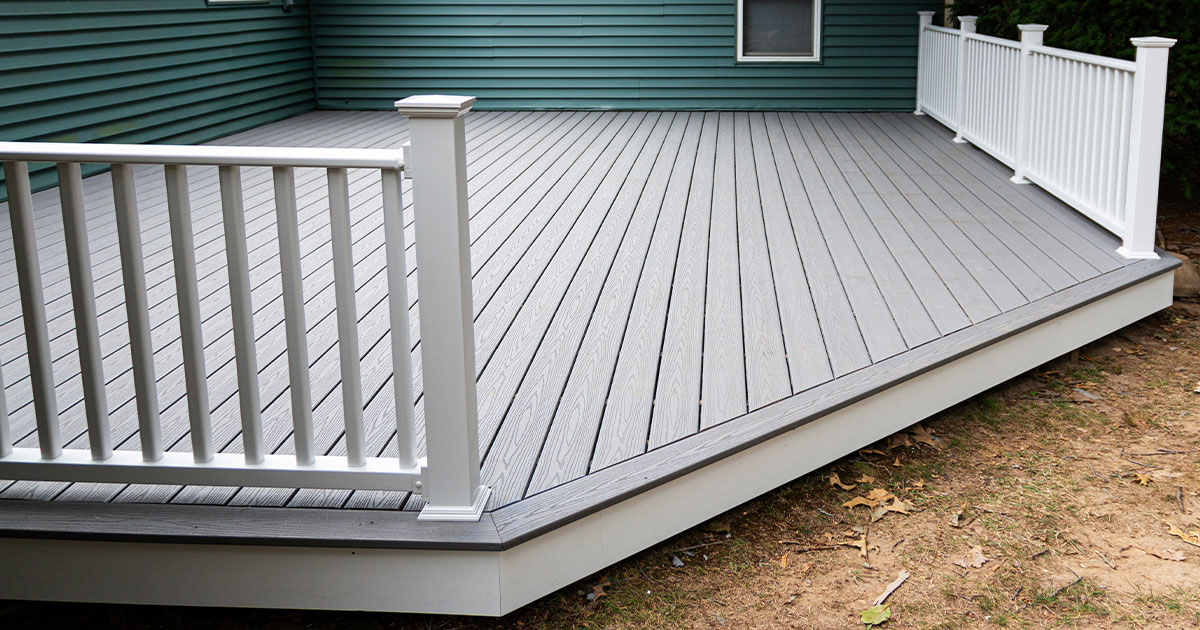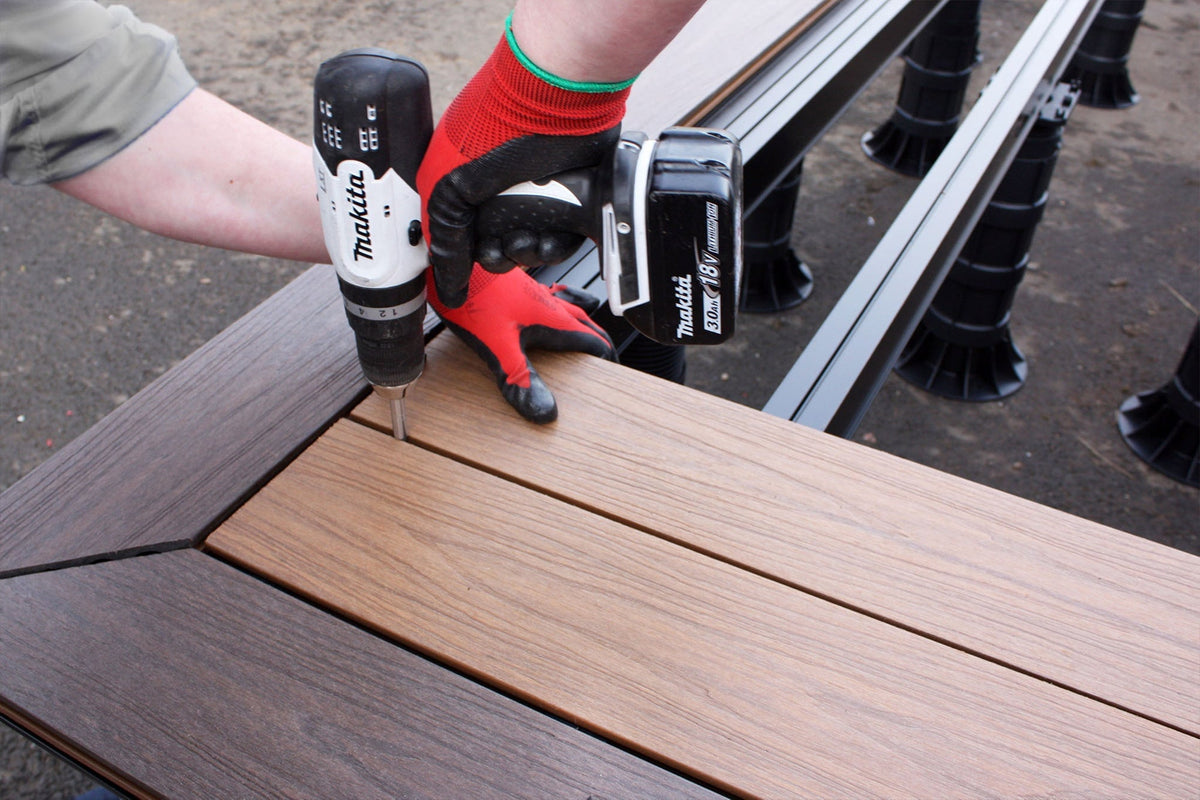How to Pick the Right Materials for Your Deck Setup Project
Choosing the proper materials for your deck installation project can seem overwhelming. There are numerous variables to take into consideration, from toughness and upkeep to appearances and environmental impact. The option between traditional wood and composite materials, each with its own collection of advantages and drawbacks, can be specifically challenging. The key is to stabilize your budget, design preferences, and way of living needs to create a deck that will improve your outside room for several years to come.
Comprehending the Various Kinds Of Deck Products
When beginning on a deck setup task, the selection of materials becomes an essential decision. Numerous options are offered, each with unique features and aesthetic appeal. Conventional timber, as an example, provides an ageless, all-natural look and is generally more cost-effective. It can warp over time and needs routine maintenance. Composite products, on the various other hand, are a mix of timber and plastic, offering toughness and resistance to weather components. They require less upkeep compared to wood yet are normally extra costly. An additional option is plastic, which is basically maintenance-free and resistant to pests and rot, albeit much less natural-looking. By comprehending these differences, homeowners can make a much more educated choice on one of the most appropriate deck product for their certain demands.
Assessing the Sturdiness and Maintenance Demands of Deck Materials
Evaluating the sturdiness and maintenance needs of deck products is an important action in deck setup. Resilience entails the material's ability to withstand severe weather, wear and tear, and its durability. Cedar and redwood are naturally resistant to rot and bugs, making them long lasting options. On the other hand, pressure-treated timber, while durable, might call for more upkeep because of its vulnerability to cracking and deforming.
Recognizing upkeep requirements is equally vital. Some products need regular securing or tarnishing to keep their appearance and stand up to moisture damage, while others, like composite decking, require less upkeep. By examining these aspects, one can pick one of the most appropriate outdoor decking product, making sure a balance in between durability, upkeep demands, and visual allure.
Cost Analysis: Contrasting Wood and Compound Decking
Although cost may at first look like an additional worry, it is a significant variable when comparing wood and composite outdoor decking. Wood, normally a less costly option, has a lower in advance expense. Over time, maintenance expenditures can build up, possibly making timber a lot more costly in the lengthy run. These upkeep costs may include discoloration, sealing, or changing damaged boards. On the various other hand, composite outdoor decking, while more expensive initially, calls for much less maintenance, possibly minimizing long-term costs. Yet, it's essential to keep in mind that composite decking isn't unsusceptible deterioration, and replacement prices can be high. Therefore, possible deck owners must consider their spending plan and desire to keep their decks when choosing in between timber and composite decking.
Appearances and Layout Versatility of Decking Materials
While expense is an essential consideration, the visual allure and style versatility of outdoor decking materials likewise play a substantial duty in the decision-making procedure. Various materials provide differing degrees of aesthetic charm. For example, natural wood outdoor decking supplies a timeless, classic look, while composite materials supply a variety of colors and structures to suit varied tastes and styles. Similarly, layout versatility refers to the ability to shape and control the outdoor decking product to satisfy particular design needs. Wood, for instance, provides high design flexibility as a result of its simplicity of cutting and forming. Composite products, while much less flexible in style, are still adaptable enough for the majority of deck styles. These factors, consequently, are essential components in the option of outdoor decking material.
Ecological Influence of Decking Materials
When picking outdoor decking products, one must think about not just looks and longevity, yet additionally the Continue environmental impact. It is very important to evaluate the sustainability of materials and explore recycled decking options. Understanding the possible impact on neighborhood environments will ensure an extra ecologically responsible selection.
Examining Material Sustainability
In the world of deck building, evaluating product sustainability is a critical step. This involves reviewing the environmental impact of each possible material, taking into consideration elements such as the energy needed for its production, its carbon impact, and its end-of-life disposal or reusing options. Timber is a renewable source, however unsustainable logging practices can lead to deforestation. Conversely, composite decking products frequently incorporate wood and plastic, minimizing the need for new hardwood but boosting dependence on nonrenewable fuel sources. Aluminum and other steels might be much more long lasting and recyclable, yet their extraction and processing can be energy-intensive. Therefore, the selection of decking products ought to stabilize capability, aesthetic appeals, price, and sustainability to make sure a liable and lasting setup.
Recycled Decking Options

Compound outdoor decking is specifically popular as a result of its resilience and convenience of upkeep. It's immune to rot, insects, and fading, making it a resilient alternative. Recycled plastic decking, on the other hand, is extremely durable and calls for minimal upkeep. While these materials may bring a greater first expense, their durability and try this site lowered environmental impact make them a wise investment for the eco-conscious house owner.

Influence On Local Environments
While the advantages of utilizing recycled products for decking can not be overemphasized, it's just as essential to take into consideration the broader ecological implications of these options. The removal, handling, and transportation of products can greatly impact regional ecosystems. Deforestation for lumber outdoor decking contributes to habitat loss and environment change. Even the manufacturing of composite materials can release hazardous discharges. Alternatively, using recycled or sustainably sourced products can aid mitigate these effects. Taking into consideration the life-span of find this products can reduce environmental impact; longer-lasting options need less regular substitute, hence preserving sources. Proper disposal of old outdoor decking is crucial to minimizing land fill waste. Basically, an eco-conscious deck task needs cautious material selection, lasting sourcing, and liable disposal.
Making Your Decision: Tips for Selecting the most effective Deck Products
As the short article transitions right into the subtopic of "Making Your Final Decision: Tips for Picking the Ideal Deck Materials", it is crucial to recognize the selection of deck products readily available. Striking an equilibrium in between durability and looks is important in this option process. The adhering to conversation will certainly assist visitors in making an informed choice based on these crucial considerations.
Recognizing Different Deck Materials
The task of choosing the ideal materials for your deck setup can seem daunting due to the vast array of options readily available. Plastic or PVC decks are also a lot more long lasting and call for much less maintenance than composite materials, but they can look much less natural. Aluminum decks are solid, lightweight, and resistant to rot, but they are likewise the most costly alternative.
Resilience vs. Aesthetics Balance
Stabilizing durability with visual appeals can be a challenge when picking deck products. The decision frequently boils down to individual preferences and the deck's intended usage. High-traffic areas might demand resilient materials like composite outdoor decking, which endures wear and tear yet may lack the all-natural charm of wood. On the other hand, timber provides a classic charm and warmth that artificial materials battle to replicate. It needs more upkeep and may not last as long. Property owners require to strike a balance, taking into consideration both the deck's practical needs and their aesthetic preferences. By doing so, they can guarantee their deck remains a useful and appealing outdoor space for several years to come.
Final thought
In final thought, choosing the best materials for your deck installation task calls for cautious consideration of elements such as sturdiness, maintenance, cost, visual appeals, and ecological impact. Whether you choose for traditional timber or composite products, your choice ought to align with your spending plan, layout preferences, and lifestyle. Inevitably, the ideal decking material is one that boosts your outside space and gives pleasure for many years to come.